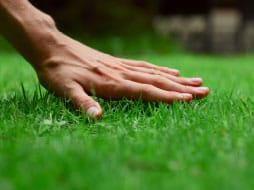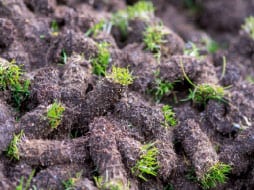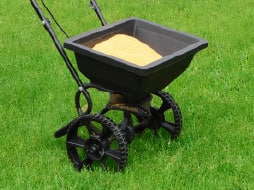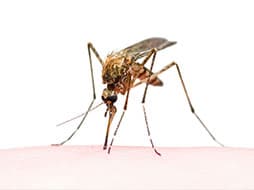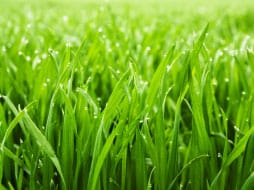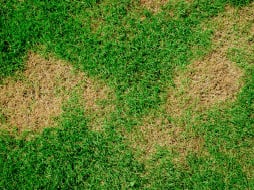Why You Should Aerate Your Lawn Regularly
Owning and maintaining a beautiful lawn takes regular basic lawn care practices, including regular aeration. Turf lawns need the right balance of oxygen, water and nutrients to properly thrive. As one part of your lawn care program, aeration can help your lawn flourish by helping these elements penetrate down to the root zone.
A healthy root system is one of the most important aspects of a well-maintained lawn, and compacted soil can be one of the main deterrents to a beautiful lawn. Some lawns are too compacted or have a dense thatch layer, preventing air, water, and nutrients from getting down to the roots where they are needed the most. Aeration, the process of breaking up, or perforating, the soil so helps to give your lawn the air, water and nutrients it needs, as well as works to relieve thatch build-up and encourages deep rooting of the turf. Additional benefits of alleviating soil compaction include reducing water usage and requirements as more water is able to penetrate deep into the soil. This has the added benefit of reducing water run-off saving you money and saving water which is better for the environment.
There are several methods of aeration. Core aeration uses a motorized machine that uses hollow tines or forks to remove small cylinder-shaped cores of soil and thatch from your lawn. These small holes provide the necessary channel for the air, nutrients and water to get to the root system of your lawn. The plugs that are pulled from your lawn are left on the surface will be dispersed back into the soil over time when the lawn is mowed or raked, making this a natural, fundamental lawn care process. Our mechanical core aerator covers your yard quickly and efficiently to maximize the area of your lawn.
When to Aerate
While all lawns benefit from regular aeration, there are a few situations that dictate whether or not any lawn is a good candidate for aeration. The more compacted a lawn is, the more necessary it is for you to have your lawn regularly aerated. If your lawn is the place where all the neighborhood kids come to play or your pets spend a lot of time running around the yard, you can be sure your turf is compacted and needs regular aeration. Regular aeration is necessary if your yard was established as part of a newly constructed home, your lawn was probably constructed on top of subsoil which was most likely compacted by construction traffic and the topsoil was in all likelihood stripped or buried. Similarly, your lawn needs aeration if your yard was established by sod and soil layering. This is a process in which soil of finer texture, which often accompanies imported sod, is layered over pre-existing coarser soil, disrupting drainage as water is held in the finer-textured soil.
While some homeowners can be reluctant to aerate their lawns because they find the plugs visually unattractive, the importance of regular aeration should not be underestimated. Aerating does not damage the lawn in any way. Plugs left behind by the aeration process quickly dissolve and decompose, and the rotation and mixing in of turf is actually healthy for the lawn itself.
The timing and frequency of home lawn aeration will depend on the health and geographical location of each lawn. Aeration can be done between 1 and 2 times a year and is commonly done in the fall and spring when the soil is moist.
Annual aeration is one part of any effective complete lawn care program. While it is possible to rent aeration machines and devices, it can be costly and physically strenuous. Using our lawn care services to aerate your lawn annually or biannually will make your lawn healthier and more capable of tolerating drought, diseases and insect stress.

